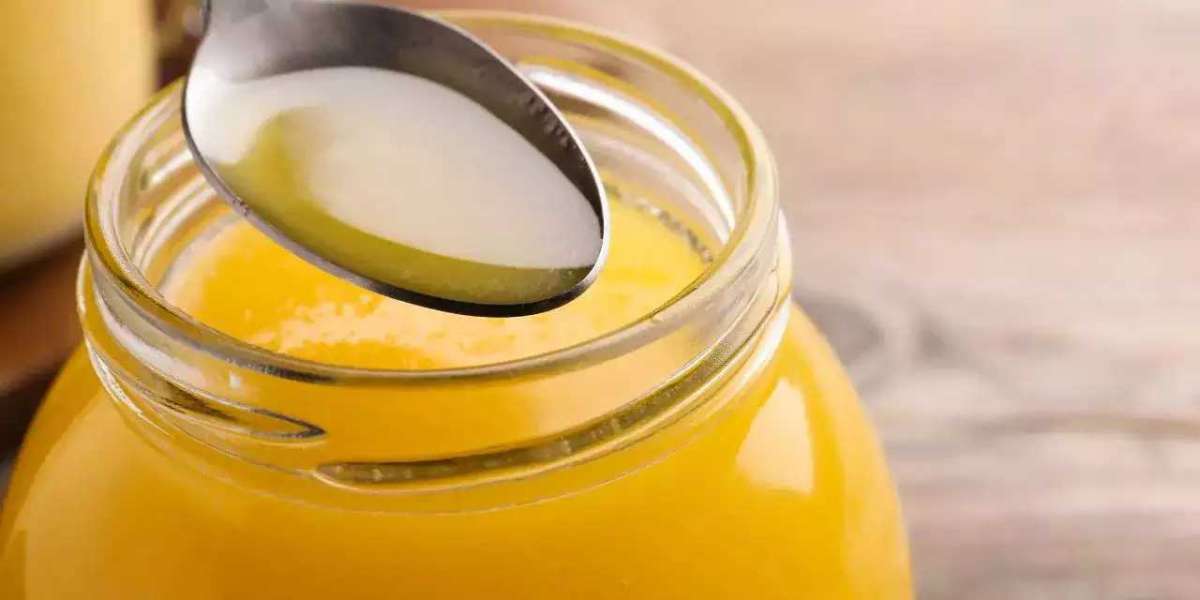Desi ghee, a clarified butter derived from cow’s milk, is a staple in Indian kitchens and has been for centuries. Revered for its rich flavor, aroma, and numerous health benefits, desi ghee holds a special place in the hearts of people across the world. But in today’s world, as everything from food to lifestyle is undergoing a transformation, one crucial aspect that stands out is the price of desi ghee. With rising costs of raw materials and production processes, understanding the price dynamics of desi ghee becomes as important as understanding its various uses and health benefits
The Tradition and Art of Making Desi Ghee
Desi ghee is made by slowly simmering cow's milk to extract the butterfat. It is then carefully heated to remove any remaining moisture and milk solids, leaving behind the pure golden fat known for its rich taste and aroma. Traditionally, desi ghee is made in small batches, with many households still following this ancient process. This slow and careful preparation ensures that the ghee retains all its nutrients and qualities.
What distinguishes desi ghee from regular butter or other types of ghee is the way it is made and its origin. The use of cow's milk that is free from hormones and antibiotics, often sourced from indigenous breeds, adds to its high nutritional value and distinctive taste. Additionally, desi ghee made from the milk of cows fed on natural, organic fodder has a higher concentration of essential vitamins like A, D, and K, and beneficial fatty acids like Omega-3.
Health Benefits of Desi Ghee
Desi ghee is not just a flavorful addition to your food; it is also considered an elixir in traditional Ayurvedic medicine. For centuries, it has been hailed for its various medicinal properties, including:
Improved Digestion: Desi ghee is rich in butyrate, a short-chain fatty acid that is known to improve gut health by promoting the growth of good bacteria in the digestive system. It also helps in reducing inflammation in the gut, making it an excellent choice for those with digestive issues.
Boosts Immunity: The presence of antioxidants in desi ghee helps fight free radicals and boost the body’s immune system, making it an important part of the diet for strengthening overall health.
Supports Heart Health: Contrary to the myth that ghee is unhealthy for the heart, desi ghee can be heart-healthy when consumed in moderation. It contains short and medium-chain fatty acids that are easier to digest and metabolize, unlike the long-chain fats present in many processed oils.
Improves Skin Health: Due to its high content of Vitamin E and antioxidants, desi ghee is often used in skin care routines. It moisturizes the skin, making it soft and supple, while also helping in reducing scars and fine lines.
Promotes Weight Loss: The medium-chain fatty acids in desi ghee help increase the body’s metabolism, aiding in weight loss. It also provides satiety, reducing the urge to snack throughout the day.
The Rising Popularity of Desi Ghee Worldwide
In recent years, desi ghee has gained significant popularity in many parts of the world, especially among health-conscious individuals and those following various dietary trends such as Keto, Paleo, and Whole30. The world’s growing shift toward organic and natural food products has led to a surge in the demand for desi ghee, particularly in Western markets. This increasing demand has resulted in a steady rise in the price of desi ghee over time.
One reason for this surge in demand is the growing awareness about the health benefits of traditional fats like ghee over synthetic, processed oils. Ghee is a natural source of fat that doesn’t undergo the harmful processes of hydrogenation and refining that are common with other oils. It is also an essential part of Indian cuisine, used in cooking, frying, and even as a condiment or accompaniment to dishes.
Factors Affecting Desi Ghee Price
Like any other commodity, the price of desi ghee is influenced by several factors. Some of the most prominent reasons that affect the desi ghee price include:
Cost of Raw Material (Milk): The price of desi ghee is directly tied to the cost of milk, which varies depending on factors such as the breed of cow, feed quality, and climate conditions. Desi ghee made from organic milk or milk from indigenous breeds tends to be more expensive due to the higher cost of production.
Production Methods: Ghee produced through traditional methods, which involve slow heating and multiple stages of filtration, is more labor-intensive and time-consuming. As a result, such desi ghee tends to be priced higher than ghee made using modern, mass-production methods.
Quality of Ghee: Desi ghee made from A2 milk (from indigenous cows like Gir, Sahiwal, etc.) is often priced higher than regular ghee. The presence of more beneficial nutrients, including higher levels of Omega-3 fatty acids and conjugated linoleic acid (CLA), contributes to the higher price.
Packaging and Brand: Premium brands that focus on organic, chemical-free, and ethically sourced ghee tend to charge more due to higher quality control standards and brand value. Packaging (glass jars, eco-friendly packaging) also contributes to the price increase.
Market Demand and Supply: The increasing popularity of desi ghee in both domestic and international markets has led to a rise in demand, which can result in higher prices, especially when supply cannot meet the demand. Seasonal variations in milk production and export regulations can also impact the availability and cost.
Economic Factors: Fluctuating fuel prices, labor costs, and other external economic factors can lead to price hikes. Additionally, inflation can drive up the overall cost of production, further influencing the price of desi ghee.
How to Find Affordable Desi Ghee
While desi ghee is often perceived as an expensive product, there are ways to find it at more reasonable prices without compromising on quality:
Buy in Bulk: Purchasing ghee in larger quantities often reduces the price per unit. If you use ghee regularly in your cooking, this could be an ideal way to save money in the long run.
Look for Local Producers: Many local producers of desi ghee offer high-quality products at a more affordable price than branded products. Look for ghee produced in your local area, as it may be fresher and less expensive.
Compare Prices Online: Online marketplaces often offer discounts and bulk deals on desi ghee. Checking different retailers online can help you find a good deal.
Homemade Ghee: Making desi ghee at home can be a cost-effective option if you have access to good-quality milk. The process requires some effort, but it allows you to control the quality of ghee and reduce your overall expenses.
Conclusion
Desi ghee is more than just a cooking ingredient; it is a symbol of tradition, health, and well-being. The price of desi ghee is influenced by a variety of factors such as the quality of raw materials, production methods, and market dynamics. While it might seem expensive compared to other oils, the health benefits and richness of desi ghee make it a worthwhile investment for those who seek quality and nourishment. Whether you're using it for cooking, beauty routines, or as a part of your health regimen, desi ghee is truly a golden elixir that has stood the test of time.








